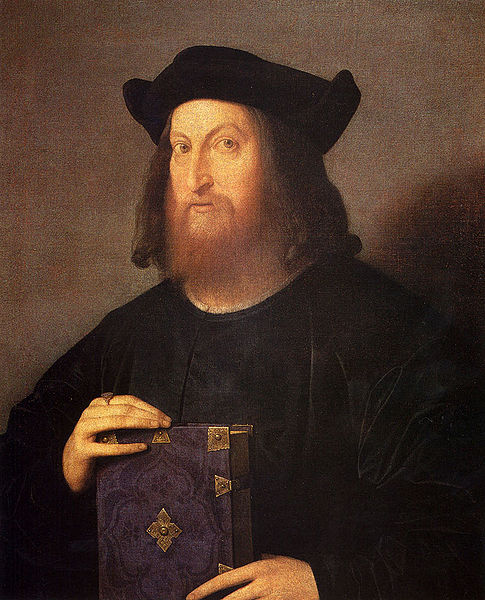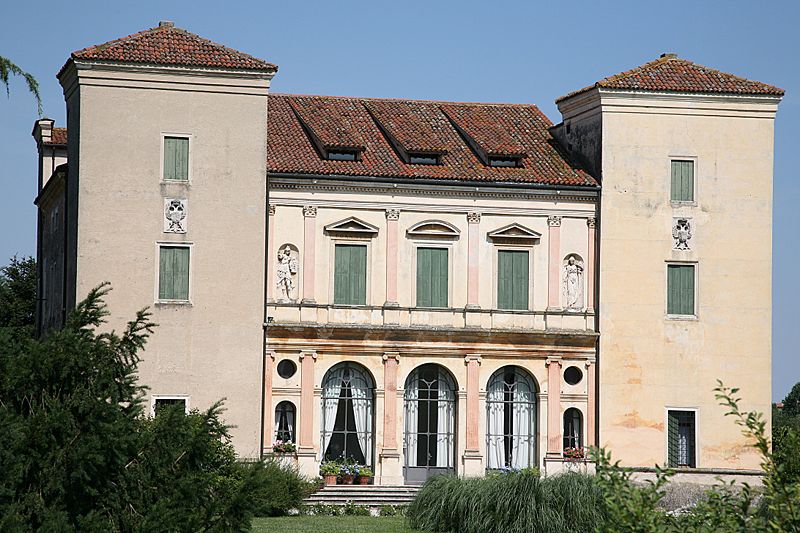<Back to Index>
- Psychologist and Inventor of IQ Test Alfred Binet, 1857
- Humanist Writer Gian Giorgio Trissino, 1478
- 1st Duke of the Duchy of Prussia Albrecht, 1490
PAGE SPONSOR


Gian Giorgio Trissino (8 July 1478 – 8 December 1550) was an Italian Renaissance humanist, poet, dramatist, diplomat, and grammarian.
Trissino was born of a patrician family in Vicenza. He was exiled from Venice for political reasons, and traveled to Germany and Lombardy. He eventually came under the protection of Pope Leo X, Pope Clement VII, and Pope Paul III. He had the advantages of a good humanistic training, studying Greek under Demetrius Chalcondylas at Milan and philosophy under Niccolò Leoniceno at Ferrara. His culture recommended him to the humanist Pope Leo X, who in 1515 sent him to Germany as his nuncio; later on Pope Clement VII showed him special favour, and employed him as ambassador.
In 1532, the Emperor Charles V made Trissino a count palatine. In spite of the banishment from Vicenza pronounced upon him in 1509 because his family had favoured the plans of Maximilian, he was held in honour throughout Italy. Wherever he made his home, it was a center for gatherings of scholars, littérateurs, and the most cultured men of the time. His family life was far from happy, apparently through little fault of his own.
In the history of modern European literature Trissino occupies a prominent place because of his tragedy Sophonisba (1515; ed., Bologna, 1884). Based on the life of the Carthaginian lady Sophonisba, and inspired by ancient tragedies, it was perhaps the first regular tragedy in early modern times and would serve as an example for European tragedies throughout the 16th century (it was translated into French by Mellin de Saint - Gelais, where it was performed with great acclaim in 1556). It was the first tragedy in Italian to show deference to the classic rules.
A partisan of Aristotelean regularity, Trissino disapproved of the freedom of the chivalrous epic, as written by Ariosto. In his own composition the Italia liberata dai Goti (1547 - 1548), dealing with the campaigns of Belisarius in Italy, he sought to show that it was possible to write in the vernacular an epic in accordance with the classic precepts. The result is a cold and colourless composition.
He was one of the many who engaged in the discussion as to what is true literary Italian. Following the lead of Dante, he advocated the enrichment of the Italian language, and espoused in his Castellano (1529) the theory that the language is a courtly one made up of contributions from the refined centers in Italy; instead of being fundamentally of Tuscan origin. For clearness he proposed that in writing Italian certain new characters (part of which derived from the Greek alphabet) be adopted to show the difference between open and close E and O ([ɛ] and [ɔ] vs. [e] and [o]), voiced and voiceless S and Z ([z] and [dz] vs. [s] and [ts]), and vocalic and consonantal I and V ([i] and [u] vs. [j] and [v]). The proposition was ignored, except for the last point, which brought to the modern distinction U vs. V and I vs. J, which eventually caught up also for other European languages. I Simillimi (1548) which is a version of the Menæchmi of Plautus, I Ritratti (1524) which is a composite portrait of feminine beauty, and the Poetica, which contains his summing up of the Aristotelean principles of literary composition, made up the rest of his important writings.
In addition, Trissino played a prominent role in the early career of Andrea Palladio, which developed into a long and close friendship between the two men. Trissino first taking Palladio under his wing after becoming acquainted with him while building his villa in Cricoli.
Trissino died in Rome in the December of 1550.
An edition of his collected works was published at Verona in 1729.